Occupational Safety Training for Rugby Ball Manufacturing
99,000 ₫
Note: The above price is calculated per person and may vary depending on the number of trainees participating in the course and market fluctuations. For more accurate pricing information, please refer to the price list or contact our consultants directly.
Occupational safety is an important issue in rugby ball manufacturing plants and needs to be addressed promptly to ensure workers’ health and safety, as well as enhance the reputation of businesses. The Occupational Safety Training course is one of the most effective solutions to raise awareness on accident prevention for workers involved in rugby ball production.
Table of Contents
Toggle1. Overview of the Rugby Ball
a. What is a Rugby Ball?
The rugby ball is a distinctive type of ball used in rugby sports, including rugby union and rugby league. Below are the features and information related to the rugby ball:
Shape and Size
- Shape: The rugby ball has an elongated oval shape with two pointed ends. This design allows the ball to roll in various directions and makes passing and running easier.
- Size: A rugby ball is typically about 28–30 cm in length and approximately 58–62 cm in circumference. The ball usually weighs between 410–460 grams.
Structure
- Surface: The rugby ball is often made from synthetic leather or rubber, with raised seams on the surface to improve grip and control during passing and throwing.
- Inside: The ball contains an inner bladder made of rubber or similar material, which helps maintain its shape and elasticity.
Purpose of Use
- Rugby Union and Rugby League: Rugby balls are used in rugby union and rugby league matches. Each sport has its own rules for gameplay and ball-handling techniques.
- Other: Besides rugby, the rugby ball can also be used for other sports and recreational activities such as training and traditional games.
History
- Origin: The rugby ball originated from ancient football games in England, where it was developed and refined over time. It is called a “rugby ball” to distinguish it from other types of balls.
Standards and Design
- Standards: Specific size and weight standards for rugby balls are set by international rugby governing bodies such as World Rugby.
- Design: The design of a rugby ball may vary depending on the manufacturer and purpose of use, but basic standards remain unchanged to ensure fairness in competition.

b. Types of Machinery Used in Rugby Ball Production
Leather or Material Cutting Machines
- Leather cutting machines: Used to cut leather or synthetic material sheets into smaller parts of the required size and shape for the ball. These machines typically offer high precision to ensure uniform pieces.
- Automatic cutting machines: Some modern production lines use automatic cutting machines capable of handling multiple layers of material at once.
Sewing and Stitching Machines
- Automatic sewing machines: Used to stitch the leather or material panels together. These machines often have an automatic mode to produce even and durable seams.
- Special sewing machines: Some machines are specially designed to sew raised seams or other decorative details on the rugby ball.
Pressing and Steaming Machines
- Pressing machines: Used to press the leather or material pieces together under high pressure, ensuring the rugby ball’s accurate shape.
- Steaming machines: Use steam or heat to soften and shape the material layers, ensuring the ball maintains its shape and required elasticity.
Air Pump Machines
- Air pumps: Used to inflate the ball through a valve, helping it maintain the correct shape and elasticity for play.
Quality Inspection Machines
- Size inspection machines: Ensure the ball meets the required size and weight standards.
- Durability testing machines: Check the ball’s durability under pressure and impact to ensure it does not get damaged during use.
Printing Machines
- Logo and information printing machines: Used to print the manufacturer’s logo, product details, and decorative elements on the rugby ball surface.
Packing Machines
- Automatic packing machines: Package finished balls into boxes or bags, ready for distribution. Automatic packing increases efficiency and reduces errors in the packaging process.
c. Famous Rugby Ball Manufacturers
Gilbert
- Introduction: Gilbert is one of the oldest and leading rugby ball brands. Founded in 1823, Gilbert has become a prominent name in supplying rugby balls for international tournaments and professional clubs.
- Notable products: Gilbert Xact, Gilbert Atomic, Gilbert Synergy.
Kukri
- Introduction: Kukri is a well-known sports brand, particularly in rugby. They provide high-quality products trusted by many teams and players.
- Notable products: Kukri Classic, Kukri Pro, Kukri Elite.
Adidas
- Introduction: Although more famous for other sports products, Adidas also produces high-quality rugby balls. They combine modern design with advanced technology to create top-tier products.
- Notable products: Adidas Rugby Ball.
Nike
- Introduction: Nike, one of the largest sports brands in the world, offers rugby balls with creative designs and high quality. Nike products are popular for their combination of style and performance.
- Notable products: Nike Vapor, Nike Premier.
Mikasa
- Introduction: Mikasa is a renowned sports ball manufacturer, including rugby balls. They are known for high durability and advanced technology.
- Notable products: Mikasa Rugby Ball.
Steeden
- Introduction: Steeden is a famous Australian brand specializing in rugby league balls. They are recognized for producing durable and high-performance products.
- Notable products: Steeden Classic, Steeden Elite, Steeden NRL.
Puma
- Introduction: Puma is a global sports brand offering various rugby balls with advanced design and technology. They are known for innovation and quality.
- Notable products: Puma Rugby Ball.

d. Specific Jobs in a Rugby Ball Manufacturing Plant
Group 1
- General Director, Deputy General Director, Department Heads in the rugby ball manufacturing plant.
Group 2
- Safety officers: Manage workplace safety, design safety procedures, supervise, and ensure employees comply with safe working practices.
Group 3
- Panel stitching: Use automatic or special sewing machines to join leather panels together, including stitching raised seams and other details.
- Seam inspection: Ensure seams are uniform and strong to maintain ball durability.
- Shaping press: Use pressing machines to form the rugby ball’s exact shape, ensuring all panels or materials are securely bonded.
- Steaming: Place the ball in a steaming machine to soften and shape material layers, helping the ball retain its required shape and elasticity.
- Inflating: Use an air pump to inflate the ball through a valve to maintain correct shape and elasticity.
- Size inspection: Ensure the ball meets the standard size and weight requirements.
- Durability testing: Perform durability tests to ensure the ball can withstand impacts and pressure during use.
- Uniformity inspection: Ensure the ball’s shape, size, and quality are consistent throughout the product batch.
- Logo and information printing: Use printing machines to apply the manufacturer’s logo, product descriptions, and decorative details onto the ball surface.
- Packing: Use automatic packing machines to package balls into containers ready for distribution.
Group 4
- Office work, service, sales, and marketing.
- Production management, quality control, human resource management, materials management, finance, and accounting.
- Research and development of new products, design of product packaging and branding.
2. Overview of the Occupational Safety Training Course for Rugby Ball Production
Within the scope of this article, we focus on Group 3 because Group 3 directly participates in the production process and is exposed to the highest occupational safety risks. Refer to other groups here.
a. What is Group 3 Occupational Safety Training?
- Group 3 occupational safety training consists of sessions designed to equip workers with awareness on preventing workplace accidents.
- The occupational safety training course helps workers recognize and avoid hazards, minimizing the risk of workplace accidents while working.
REGISTER FOR OCCUPATIONAL SAFETY TRAINING
b. Training Duration
Initial occupational safety training duration:
- Total training time is at least 24 hours, including examination time.
- 8 hours of theoretical lessons on occupational safety and hygiene policies and laws.
- 8 hours of theoretical lessons on basic occupational safety and hygiene knowledge.
- 4 hours of theoretical lessons on specialized training content.
- 2 hours of practical lessons on specialized training content.
- 2 hours for the final theoretical examination.
The safety training center will arrange the training sessions depending on workers’ schedules. Typically, there will be 6 sessions over 3 days, provided that the manufacturing enterprise can arrange continuous training time.
Periodic occupational safety training:
- Before the occupational safety card expires, workers who wish to renew it must attend a periodic occupational safety training course, with a training duration of at least 50% of the initial training duration.
Explanation: The total duration for periodic occupational safety training is at least 12 hours, including examination time. Upon completion of the course and passing the examination, workers will have their occupational safety card renewed.
c. Training Content
| No. | TRAINING CONTENT | TRAINING DURATION (HOURS) | |||
| Total | Including | ||||
| Theory | Practice | Exam | |||
| I | Occupational safety and hygiene policies and laws | 8 | 8 | 0 | 0 |
| 1 | Overview of legal documents on occupational safety and hygiene. | 6 | 6 | ||
| 2 | System of occupational safety and hygiene standards and technical regulations. | 1 | 1 | ||
| 3 | Specific regulations from state management agencies on occupational safety and hygiene during construction, expansion, or renovation of facilities for producing, using, storing, preserving, and inspecting machinery, equipment, materials, and substances subject to strict safety and hygiene requirements. | 1 | 1 | ||
| II | Basic occupational safety and hygiene knowledge | 8 | 8 | 0 | 0 |
| 1 | Basic knowledge of hazardous and harmful factors in the workplace. | 4 | 4 | ||
| 2 | Methods to improve working conditions. | 1 | 1 | ||
| 3 | Safety culture in production and business. | 1 | 1 | ||
| 4 | Rights and obligations of employers and employees; safety and hygiene policies and regimes for workers; functions and duties of the safety and hygiene network. | 1 | 1 | ||
| 5 | Occupational safety and hygiene regulations, safety and hygiene signs and instructions, use of safety devices and personal protective equipment; skills in first aid, prevention of occupational diseases. | 1 | 1 | ||
| III | Specialized training content | 6 | 4 | 2 | 0 |
| Comprehensive knowledge of machinery, equipment, and substances that generate hazardous factors; risk analysis, assessment, and management; safe working procedures with machinery, equipment, and substances subject to strict safety and hygiene requirements. | 6 | 4 | 2 | ||
| IV | Final examination | 2 | 2 | 0 | 0 |
| Total | 24 | 22 | 2 | ||
See more training content for all 6 groups.
d. Occupational Safety Card
After completing the occupational safety training course and passing the examination, workers will be issued an occupational safety card (commonly referred to as a Group 3 occupational safety certificate).
The Group 3 safety card will clearly show information such as: full name, date of birth, job title, specific working environment, training period, official stamp, and signature confirming course completion.
According to the card issuance regulations in Clause 2 Article 24 of Decree 44/2016/NĐ-CP, there are 2 cases:
- If the employer and employee have a labor contract, the employer must sign, stamp, and seal the safety card for Group 3 workers after completing training and passing the exam.
- If the worker is self-employed, seasonal, or does not have a labor contract, the training unit must sign, stamp, and seal the safety card after the worker completes training and passes the exam.

3. Identifying Hazards Affecting Workers in Rugby Ball Production
Mechanical and Machinery Hazards
- Hazard: Cutting machines, sewing machines, pressing machines, and other equipment can cause injuries from direct contact with moving parts or getting trapped.
Chemical and Material Hazards
- Hazard: Use of chemicals such as adhesives, softeners, or synthetic materials can cause skin irritation, respiratory issues, or allergic reactions.
Temperature and Pressure Hazards
- Hazard: Processes like steaming and pressing can create high temperatures or pressure, posing risks of burns or other injuries.
General Health and Safety Hazards
- Hazard: Heavy workloads or long working hours can lead to muscle strain, fatigue, and general health problems.
Psychological Hazards
- Hazard: Work pressure and stressful environments can affect workers’ mental health.
Infection Hazards
- Hazard: In crowded workplaces, there is a risk of disease transmission, especially during epidemics.

4. Safety measures when participating in the production of rugby balls
Training and Education
- Safety training: Provide comprehensive training for workers on safety procedures, including how to operate machinery, handle chemicals, and emergency response measures.
- Information updates: Ensure workers receive the latest information on safety regulations and any changes to production processes.
Use of Personal Protective Equipment (PPE)
- Gloves: Wear cut-resistant gloves when working with cutting and sewing machines to protect hands from cuts and abrasions.
- Safety glasses: Use safety goggles to protect eyes from dust, debris, and chemicals that may cause irritation.
- Safety shoes: Use slip-resistant and impact-resistant safety footwear to protect feet from injury.
li>Masks: Wear masks or respiratory protection when working with chemicals or in dusty environments.
Machinery and Equipment Management
- Regular maintenance: Ensure all machines and equipment are maintained and inspected regularly to prevent malfunctions and accidents.
- Protective devices: Install guards and emergency shut-off devices on machinery to protect workers from entrapment or contact with moving parts.
Chemical Handling and Storage
- Chemical safety: Store chemicals according to regulations and use protective measures such as safety signage and proper containment.
- Ventilation: Ensure the work area has good ventilation systems to minimize exposure to harmful chemical vapors.
Temperature and Pressure Management
- Heat equipment: Ensure equipment that operates at high temperatures is maintained and fitted with appropriate protective devices.
- Pressure checks: Periodically inspect equipment operating under high pressure and ensure they function correctly to avoid risks.
Establishing Safety Procedures
- Work procedures: Develop and implement safe work procedures for each production stage, from material cutting to packaging.
- Signage: Place clear safety signs in key working areas to remind workers of safety rules.
Monitoring and Evaluation
- Regular supervision: Conduct regular supervision to ensure safety rules are followed and promptly address any issues that arise.
- Risk assessment: Perform periodic risk assessments and update safety measures as needed.
- Periodically conduct workplace environmental monitoring in factories, collect and analyze harmful factors affecting workers, and from there adjust to reduce hazards to prevent occupational diseases for them.
Emergency Response
- Emergency response plan: Develop and implement emergency response plans for situations such as fires, chemical spills, or workplace accidents.
- Drills: Organize regular emergency response drills to ensure workers know how to react in emergencies.
General Health Protection
- Breaks and rest: Ensure workers get sufficient rest to reduce fatigue and stress, which helps reduce the risk of accidents.
- Health check-ups: Provide regular medical check-up programs to detect health issues early that may affect work.
5. Benefits of occupational safety training for rugby ball production
An Toàn Nam Việt provides your company with the following excellent benefits upon completion of occupational safety training courses as required by Decree 44/2016/ND-CP on occupational safety and hygiene for companies, factories, and enterprises.
- Workers can recognize potential risks of workplace accidents and take preventive measures to avoid accidents.
- Your company can establish preventive measures for risks in production, operation, and maintenance processes.
- Reduce costs associated with safety incidents in the workplace.
- Uninterrupted production helps increase labor productivity and product quality.
- Comply with occupational safety laws and avoid legal risks.
- Create credibility and professionalism in all aspects, thereby elevating your company’s brand.
The training courses from Nam Việt are a solution to prevent and counteract external factors that may affect individuals so they can avoid dangers that could lead to injury or, in severe cases, death.
REGISTER FOR OCCUPATIONAL SAFETY TRAINING
6. Customer feedback after completing the occupational safety training for rugby ball production
An Toàn Nam Việt has many years of experience accompanying numerous businesses across Vietnam in general and in southern provinces in particular. That responsibility is very precious to Nam Việt, which is why Nam Việt’s Occupational Safety Training is increasingly professional. The motivation behind An Toàn Nam Việt’s growth to the present comes from positive feedback as well as suggestions from businesses. Below are testimonials from partners we have served.
Bac Nam E&C Investment and Construction Joint Stock Company
“The first time using the service at An Toàn Nam Việt I was surprised by the enthusiastic 24/7 support from the consulting team. The class organization was very quick and convenient for our company — thank you very much for Nam Việt’s service!”
Hoa Dat Construction and Trading Joint Stock Company
“Nam Việt’s service has greatly helped us simplify occupational safety and complete safety documentation for our work processes. The consulting team is enthusiastic and timely in answering our questions. 5 stars for Nam Việt.”
See more customer interview videos after using An Toàn Nam Việt’s services
7. An Toàn Nam Việt’s capacity for occupational safety training
An Toàn Nam Việt is a reputable and quality center for occupational safety training in Vietnam today. Training sessions are continuously held at production workshops, factories, or construction sites across the country (all 63 provinces and cities of Vietnam).
REGISTER FOR OCCUPATIONAL SAFETY TRAINING
License for occupational safety training
- An Toàn Nam Việt has been inspected and granted a certificate of eligibility to conduct occupational safety and hygiene training by the Department of Safety under the Ministry of Labour – Invalids and Social Affairs. This further reinforces our capacity to operate occupational safety training.

Materials and lectures
- Before training materials are included in the occupational safety training courses, they are reviewed and approved to ensure the lectures are accurate in content and effective in application.
- The instructors’ teaching methods are standardized according to An Toàn Nam Việt‘s teaching standards — methods researched and consolidated by experts in occupational safety and hygiene training to maximize knowledge absorption for learners.
Facilities
- Controlling classroom environment factors that affect training will increase teaching efficiency and learners’ knowledge retention.
- Our training facilities always provide spacious classrooms that meet standards for area, lighting, and training equipment, etc.
8. A reputable national quality training center
At An Toàn Nam Việt, we place our professional dedication to occupational safety training as a top priority. For us, imparting knowledge that enables workers to protect themselves so they can have a safe livelihood is a contribution to nation-building.
To ensure effective training, we prepare carefully and meticulously in every detail, no matter how small — from preparing tools and teaching aids to curricula, materials, sound, and lighting.
Our occupational safety trainers are experts with many years of experience in the field. They even have research works identifying hazards across various industries and ways to prevent them.
Instructors’ lectures are distilled from real practice and delivered in the most vivid and easy-to-visualize manner for workers. Those elements help workers feel comfortable during learning and absorb the material better. Of course, the knowledge shared always adheres to Decree 44/2016/ND-CP.
As a result, workers learn many preventive measures and ways to protect themselves, and can apply them appropriately in actual work.
Our training center is proud to be a provider of professional and reputable occupational safety training services with the following advantages:
- Competitive training costs while maintaining quality.
- Flexible training schedules to match the production needs of companies.
- Quick and lawful procedures for issuing occupational safety training certificates.
- Instructors with many years of professional experience.
- Classrooms that control factors affecting the training process to increase teaching efficiency and knowledge retention.
- Courses tailored to occupational safety at enterprises.
- An Toàn Nam Việt works diligently and professionally to provide customers with accurate and prompt support.

9. Additional reference materials for occupational safety training in rugby ball production
- Rugby ball production occupational safety materials
- Occupational safety training materials set
- Occupational safety training exam set
- Rugby ball production occupational safety training slide deck (Rugby)
- Multiple-choice test for occupational safety in rugby ball production (Rugby)
No comments yet

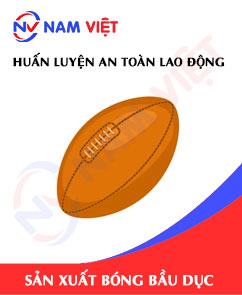
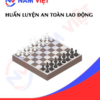
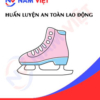



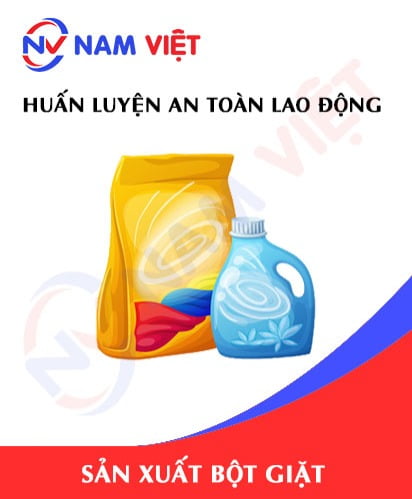


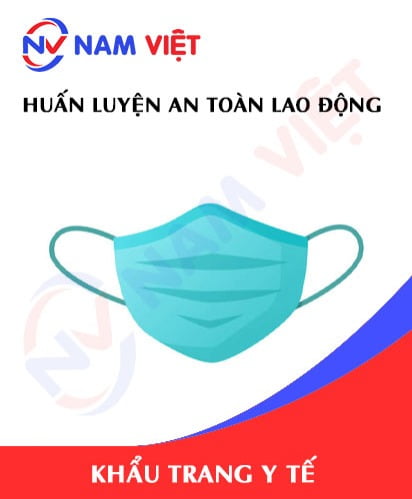

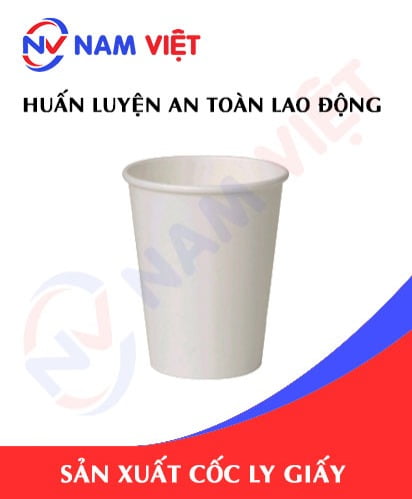
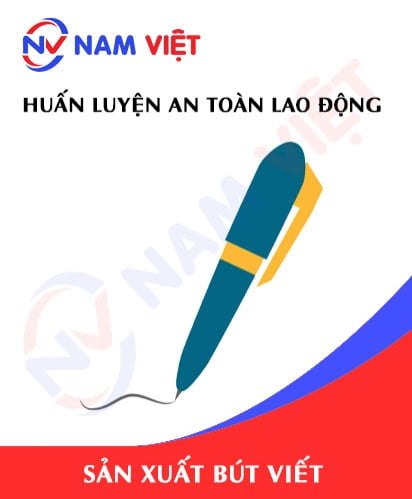
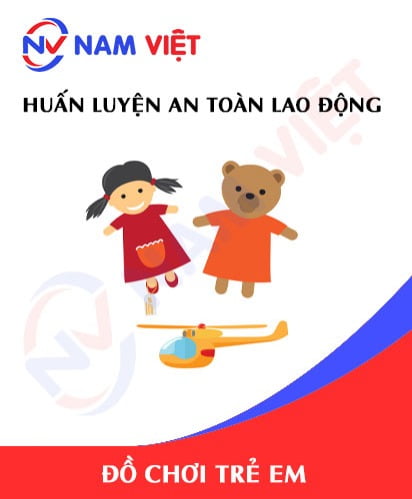
Review Occupational Safety Training for Rugby Ball Manufacturing
There are no reviews yet.